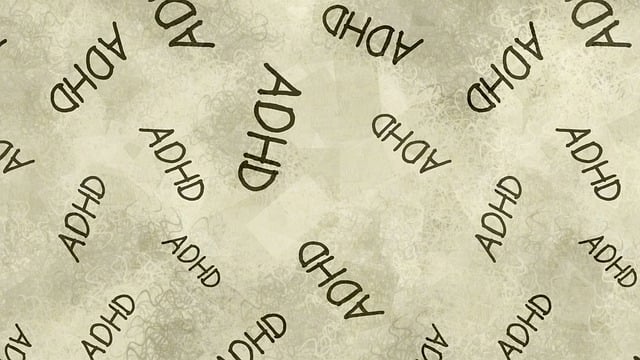Crafting an effective marketing strategy for mental wellness apps like Broomfield Acceptance and Commitment Therapy (ACT) involves understanding target audiences through market research, aligning messaging with their needs (e.g., mindfulness, peer support), and leveraging digital platforms (social media, online communities). Emphasizing ACT's principles of psychological flexibility, acceptance, and committed action boosts engagement, while content strategies focusing on relatable, SEO-optimized material enhance discoverability among users seeking stress management solutions. Online platforms, particularly social media, play a pivotal role in reaching younger audiences, while community initiatives foster connections, promote well-being, and position the app as a holistic resource.
In today’s digital age, mental wellness apps are transforming lives. To thrive in this competitive landscape, developers must master effective marketing strategies. This article guides you through a comprehensive approach, from understanding your target audience for mental wellness apps to integrating powerful Broomfield Acceptance and Commitment Therapy (ACT) principles. Discover how to craft compelling content strategies, leverage digital platforms, and build a community around mental health awareness – all crucial steps to ensure your app stands out and makes a lasting impact.
- Understanding Your Target Audience for Mental Wellness Apps
- Integrating Broomfield Acceptance and Commitment Therapy (ACT) Principles in Marketing
- Crafting Compelling Content Strategies for Engagement
- Leveraging Digital Platforms for App Promotion
- Building a Community Around Mental Health Awareness
Understanding Your Target Audience for Mental Wellness Apps

Understanding your target audience is a crucial step in developing an effective marketing strategy for mental wellness apps. Whether it’s a platform focused on Broomfield Acceptance and Commitment Therapy (ACT) or one that supports emotional healing processes, knowing who you’re catering to is key. Mental health issues can affect individuals across various demographics, age groups, and socioeconomic backgrounds. Therefore, conducting thorough market research to identify pain points, preferences, and behaviors specific to your target audience is essential.
By delving into user profiles, you can tailor messaging and features that resonate with their needs. This might involve promoting inner strength development through mindfulness exercises or emphasizing the app’s role in navigating challenging life situations. For instance, certain demographics may be more receptive to peer support groups while others prefer personalized therapy sessions. Incorporating these insights will not only enhance user engagement but also ensure your marketing efforts align with the unique requirements of those seeking mental wellness solutions.
Integrating Broomfield Acceptance and Commitment Therapy (ACT) Principles in Marketing

In marketing a mental wellness app, incorporating Broomfield Acceptance and Commitment Therapy (ACT) principles can significantly enhance engagement and appeal to users seeking effective stress management solutions. ACT emphasizes psychological flexibility, acceptance, and committing to valued actions, which can be powerful concepts to communicate in app marketing strategies. By framing the app’s features around these core ACT tenets, such as helping users accept their emotions without judgment and encouraging them to engage in activities that align with their personal values, the marketing message becomes both compelling and relatable for a targeted audience.
This approach not only resonates with individuals looking for holistic stress management techniques but also positions the app as a valuable tool within the context of broader healthcare initiatives. For instance, promoting the app’s ability to facilitate crisis intervention guidance or contribute to healthcare provider cultural competency training can further highlight its relevance and potential impact on mental wellness in diverse communities.
Crafting Compelling Content Strategies for Engagement

In today’s digital landscape, crafting compelling content strategies is paramount for engaging users and promoting mental wellness apps like Broomfield Acceptance and Commitment Therapy (ACT). The key lies in creating valuable, relatable, and accessible content that resonates with audiences. Incorporate stories and testimonials to humanize the experience, demonstrating how ACT techniques have positively transformed lives. Integrate interactive elements such as quizzes or guided meditations to encourage user participation and foster a sense of community. By balancing educational and entertaining content, mental wellness apps can capture attention and build trust among potential users seeking tools for better thinking and improved well-being.
Moreover, aligning content with relevant SEO keywords, including “positive thinking,” “mental wellness coaching programs development,” and “crisis intervention guidance,” enhances discoverability. These keywords should organically appear in blog posts, social media captions, and video scripts to attract users actively searching for solutions. Tailoring content to address specific mental health challenges while subtly promoting the app’s unique value proposition ensures a steady stream of engaged users who are ready to embrace transformative practices like ACT.
Leveraging Digital Platforms for App Promotion

In today’s digital era, leveraging online platforms is a powerful strategy for promoting mental wellness apps like Broomfield Acceptance and Commitment Therapy (ACT). Social media channels offer an excellent opportunity to reach a broad audience, especially younger generations who are often tech-savvy and open to exploring new therapeutic tools. By creating engaging content, running targeted ads, and collaborating with influencers or mental health advocates, developers can increase app visibility and attract potential users.
Public Awareness Campaigns Development centered around Mental Health Awareness can further strengthen this strategy. Utilizing platforms like Instagram, Facebook, and Twitter allows for the dissemination of valuable information about mental well-being, breaking down stigma, and encouraging people to prioritize their psychological health. These digital efforts can seamlessly complement Healthcare Provider Cultural Competency Training initiatives, ensuring that both consumers and professionals alike are equipped with knowledge and access to evidence-based treatments like ACT.
Building a Community Around Mental Health Awareness

Building a community around mental health awareness is a powerful strategy for any mental wellness app to consider. By fostering connections and creating safe spaces online, apps can encourage users to openly discuss their experiences, challenges, and victories related to mental health. This sense of belonging can be particularly beneficial in promoting practices like Acceptance and Commitment Therapy (Broomfield), where community support plays a pivotal role in helping individuals embrace change and live more fulfilling lives.
Engaging users through online forums, peer-to-peer mentoring programs, or virtual support groups enables the app to offer not just digital tools for mental wellness but also a network of like-minded individuals. This sense of camaraderie can drive user engagement and retention, while also facilitating the exchange of valuable insights and coping strategies. Additionally, organizing Stress Management Workshops or developing Mental Wellness Coaching Programs within the community can further enhance the app’s value proposition, ensuring users receive holistic support tailored to their unique needs.
Developing an effective marketing strategy for mental wellness apps involves understanding your target audience, integrating evidence-based practices like Broomfield Acceptance and Commitment Therapy (ACT), creating engaging content, leveraging digital platforms, and building a community. By combining these elements, you can promote mental health awareness and foster meaningful connections, ultimately enhancing the accessibility and impact of your app.














